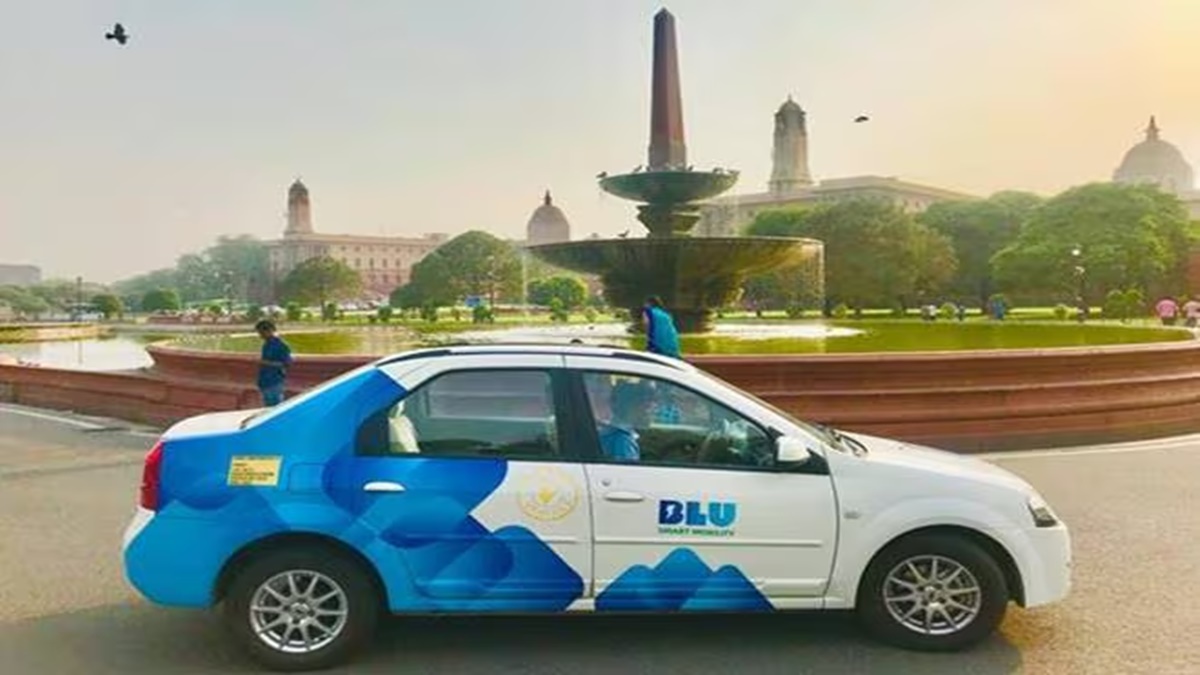In a strategic shift aimed at overcoming financial hurdles and enhancing revenue streams, BluSmart Mobility, an electric ride-hailing startup, is set to adopt a hybrid operational model. This innovative approach involves a partnership with Uber India, allowing BluSmart to maintain its brand identity while tapping into Uber’s extensive network. Insiders reveal that this collaboration will enable a segment of BluSmart’s fleet to cater to demand through Uber Green, the company’s electric vehicle (EV) service.
Embracing a Hybrid Model for Growth
A source familiar with the situation stated, “BluSmart is transitioning towards a hybrid operation that leverages Uber’s platform while maintaining its commitment to sustainability for its customers.” This partnership is a pivotal strategy designed to lower customer acquisition costs and enhance fleet utilization.
- Current Operations: BluSmart’s vehicles average only seven trips per day, which experts argue is insufficient for sustainable long-term viability.
- Goals with Uber: By aligning with Uber, BluSmart aims to boost trip volumes and improve liquidity.
Through this new arrangement, BluSmart will benefit from a share of the fare revenues earned through Uber’s platform, while Uber retains a commission, thus creating a win-win scenario for both entities.
Boosting Fleet Efficiency
Uber Green has already made significant strides, boasting over 18,000 electric vehicles in partnership with companies like Everest and Lithium. The inclusion of BluSmart’s fleet is expected to bring Uber closer to its ambitious goal of 25,000 EVs on its platform.
Historically, BluSmart has focused on providing scheduled airport rides in Delhi NCR, Bengaluru, and recently Mumbai. However, it has struggled to penetrate the on-demand ride-hailing market. Currently operating around 8,700 EVs, BluSmart lacks the critical mass needed for effective on-demand service, with industry experts suggesting that a fleet of at least 40,000 vehicles per city is necessary. The tie-up with Uber is anticipated to facilitate entry into this competitive market without incurring the hefty costs associated with expanding its own infrastructure.
Maintaining Unique Operational Practices
Despite this collaboration, BluSmart will continue to uphold its fixed-income model for drivers, setting it apart from Uber’s gig economy structure. A representative from BluSmart confirmed, “Our operations remain unchanged—our fleet and drivers are actively serving customers across various cities.”
Navigating Financial Challenges
This shift towards a hybrid model comes as Gensol Engineering, BluSmart’s parent company, grapples with financial difficulties, recently facing a downgrade to default rating by two credit agencies. To restructure its financial obligations, BluSmart had previously intended to offload 2,997 vehicles, representing about 34% of its fleet, to Refex Green Mobility. However, the deal fell through over disagreements regarding exclusive usage on the Uber platform.
-
Leadership Changes: BluSmart has experienced significant turnover in its leadership team, with several high-profile exits including CEO Anirudh Arun and CBO Tushar Garg. Nandan Sharma, the former VP of business and operations, has stepped in as the new CEO.
- Financial Overview: Reports indicate that BluSmart has faced salary delays for March, with co-founder Anmol Singh Jaggi assuring employees that back pay will be settled by the end of April. Financial disclosures reveal a monthly revenue of Rs 70 crore (annualizing to Rs 840 crore), total debt of Rs 985 crore, and a net outstanding debt of Rs 240 crore.
As BluSmart navigates these complex waters, the partnership with Uber could prove to be a critical turning point for its future operations and financial stability.











